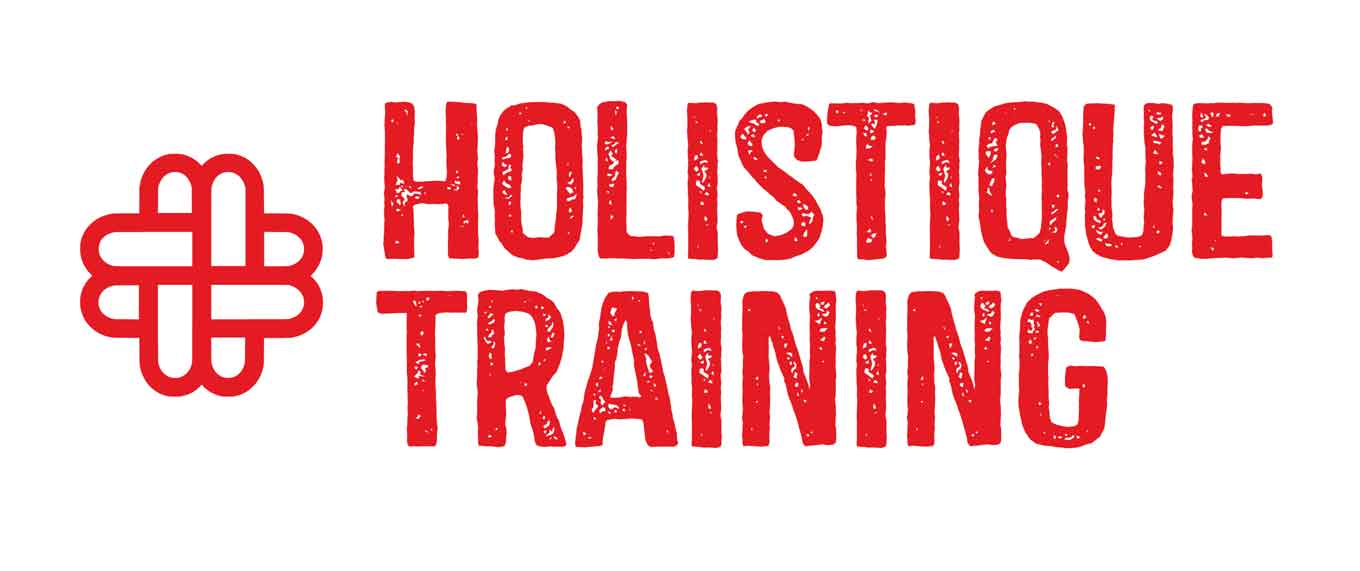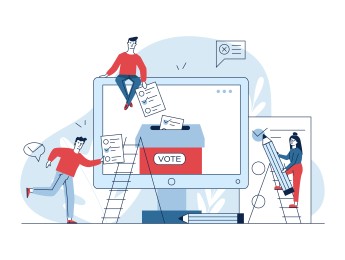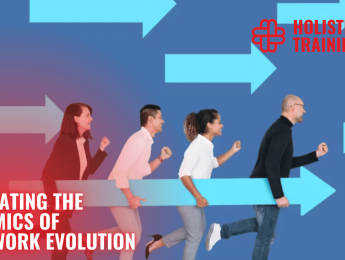- Table of Contents
- Introduction
- What is McClelland’s Theory of Needs?
- What are the 3 Dominant Motivating Drivers?
- 1. Need for Achievement (nAch)
- 2. Need for Affiliation (nAff)
- 3. Need for Power (nPow)
- McClelland’s Theory of Needs and Other Theories: Key Differences
- Maslow’s Hierarchy of Needs
- Sirota’s Three Factor Theory
- Benefits of McClelland’s Theory of Needs in the Workplace
- Enhanced Employee Engagement
- Improved Performance
- Stronger Team Dynamics
- Effective Leadership Development
- Tailored Recognition and Rewards
- Professional Development Opportunities
- A Supportive Environment
- How to Use McClelland’s Theory of Needs to Motivate Your Employees
- 1. Assess Individual Needs
- 2. Set Challenging Goals
- 3. Foster a Collaborative Environment
- 4. Empower Employees
- 5. Offer Recognition and Rewards
- 6. Provide Professional Development Opportunities
- 7. Create a Supportive Environment
- Conclusion
Introduction
Motivation is a fundamental aspect of human behavior that drives individuals to achieve their goals and fulfill their potential. Understanding what motivates people can significantly impact workplace dynamics, employee satisfaction, and overall productivity. One of the most influential theories in this realm is McClelland's Theory of Needs, which offers a nuanced perspective on human motivation by identifying three primary drivers. This blog post delves into McClelland’s Theory of Needs, explores its core components, compares it with other motivational theories, and discusses its practical applications in the workplace.
What is McClelland’s Theory of Needs?
Developed by psychologist David McClelland in the 1960s, McClelland's Theory of Needs posits that individuals are motivated by three primary needs: achievement, affiliation, and power. Unlike other theories that suggest a hierarchy of needs, McClelland’s framework emphasizes that these needs can vary in intensity among individuals and that people are driven by different combinations of these needs at different times.
McClelland's research was based on the premise that understanding these needs can help predict behavior in various contexts, particularly in organizational settings. By identifying which of these needs are most prominent in an individual, managers and leaders can tailor their approaches to motivate employees effectively. This theory is particularly relevant for understanding how to foster a productive work environment and enhance employee engagement.
What are the 3 Dominant Motivating Drivers?
At the core of McClelland’s Theory of Needs lie three dominant motivating drivers: the need for achievement, the need for affiliation, and the need for power. Each of these needs plays a critical role in influencing behavior, decision-making, and interpersonal dynamics within the workplace. Understanding these drivers in detail can help managers and leaders tailor their motivational strategies to better align with the intrinsic motivations of their employees.
1. Need for Achievement (nAch)
The need for achievement is characterized by an individual's desire to accomplish goals and excel in their endeavors. People with a high nAch are often driven by the following characteristics:
- Goal Orientation: Individuals with a strong need for achievement set challenging yet realistic goals for themselves. They are motivated by personal standards of excellence and seek to surpass their own previous performances.
- Preference for Feedback: Those high in nAch actively seek feedback on their performance. They value constructive criticism as it helps them improve and refine their skills. This feedback loop is crucial for their sense of accomplishment.
- Risk-Taking: High achievers are willing to take calculated risks. They are not deterred by the possibility of failure; rather, they view setbacks as opportunities for learning and growth. This mindset allows them to tackle complex problems and innovate within their roles.
- Independence: Individuals with a high need for achievement often prefer working independently or taking charge of projects. They thrive when given autonomy and the freedom to make decisions that align with their goals.
In the workplace, understanding this need can help managers create environments that challenge employees while providing the necessary support and recognition. By setting clear performance metrics and celebrating achievements, organizations can harness the motivation of high achievers to drive success.
2. Need for Affiliation (nAff)
The need for affiliation reflects an individual's desire for social connections and meaningful relationships. Individuals with a high nAff exhibit the following traits:
- Social Sensitivity: Those with a strong need for affiliation are highly attuned to the emotions and needs of others. They value empathy and strive to create harmonious relationships within teams.
- Team Orientation: High nAff individuals thrive in collaborative environments where teamwork and cooperation are emphasized. They often prioritize group goals over personal ambitions, seeking to foster a sense of belonging among colleagues.
- Conflict Avoidance: Individuals driven by the need for affiliation may avoid conflict to maintain harmony. They are often seen as peacemakers and may go to great lengths to ensure that team dynamics remain positive.
- Supportive Behavior: Those with a high need for affiliation often take on roles that involve mentoring or supporting others. They derive satisfaction from helping colleagues succeed and creating a positive work atmosphere.
Incorporating the need for affiliation into workplace culture can enhance team cohesion and morale. Leaders can facilitate team-building activities, encourage open communication, and recognize collaborative efforts to satisfy this need, ultimately leading to a more engaged and motivated workforce.
3. Need for Power (nPow)
The need for power is characterized by an individual's desire to influence, control, or lead others. This need can manifest in two distinct forms:
- Personal Power: Individuals with a high need for personal power seek to assert their influence over others for their own benefit. They are often driven by ambition and the desire to achieve personal recognition and status.
- Institutional Power: In contrast, those who are motivated by institutional power aim to use their influence to benefit the organization or group as a whole. They are often more focused on leadership roles that enable them to drive change and improve organizational outcomes.
Individuals with a high need for power exhibit the following behaviors:
- Leadership Aspirations: They are often drawn to leadership positions and seek opportunities to take charge of projects or teams. Their desire for influence can lead them to pursue roles where they can make impactful decisions.
- Decision-Making: High power individuals are comfortable making decisions and are often seen as assertive in their approach. They thrive in environments where they can exercise control and direct the actions of others.
- Competitive Nature: Those with a strong need for power may exhibit a competitive spirit, striving to outperform peers and establish themselves as leaders in their field. This competitiveness can drive innovation and progress within teams.
- Visionary Thinking: Individuals motivated by institutional power often possess a strategic mindset, focusing on long-term goals and the broader impact of their decisions. They are adept at rallying others around a shared vision and inspiring collective action.
Recognizing and harnessing the need for power can be beneficial for organizations looking to cultivate strong leaders. By providing opportunities for leadership development and encouraging individuals to take initiative, organizations can channel this motivation into driving performance and achieving strategic objectives.
By understanding these three dominant motivating drivers—achievement, affiliation, and power—organizations can create a more nuanced approach to employee motivation. Tailoring strategies to align with these intrinsic needs not only enhances individual performance but also contributes to a more dynamic and productive workplace culture.
McClelland’s Theory of Needs and Other Theories: Key Differences
While McClelland’s Theory of Needs provides a robust framework for understanding motivation, it is essential to compare it with other prominent theories, such as Maslow's Hierarchy of Needs and Sirota's Three Factor Theory, to appreciate its unique contributions.
Maslow’s Hierarchy of Needs
Abraham Maslow’s Hierarchy of Needs is one of the most well-known motivational theories. It proposes that human needs are arranged in a hierarchy, starting from basic physiological needs and ascending to self-actualization. According to Maslow, individuals must satisfy lower-level needs before they can focus on higher-level ones.
In contrast, McClelland’s Theory does not suggest a hierarchical structure. Instead, it posits that individuals can be motivated by different needs simultaneously, and the intensity of these needs can vary based on personal experiences and contexts. While Maslow emphasizes a linear progression through needs, McClelland’s framework allows for a more fluid understanding of motivation.
Sirota’s Three Factor Theory
Sirota’s Three Factor Theory focuses on three fundamental employee needs: equity, achievement, and camaraderie. While there are overlaps with McClelland’s needs—particularly in the areas of achievement and affiliation—Sirota's theory emphasizes the importance of fairness (equity) in the workplace.
To provide a clearer understanding of the differences between McClelland’s Theory of Needs, Maslow’s Hierarchy of Needs, and Sirota’s Three Factor Theory, the following table summarizes the key distinctions among these motivational frameworks:
Aspect | McClelland’s Theory of Needs | Maslow’s Hierarchy of Needs | Sirota’s Three Factor Theory |
Core Focus | Individual needs for achievement, affiliation, and power | Hierarchical progression of human needs | Employee needs for equity, achievement, and camaraderie |
Structure | Non-hierarchical; needs can coexist and vary in intensity | Hierarchical; lower needs must be met before higher needs | Non-hierarchical; all three factors are essential for motivation |
Motivation Sources | Intrinsic motivations based on personal drives | Combination of intrinsic and extrinsic motivations | Primarily intrinsic motivations related to workplace dynamics |
Application Context | Primarily in organizational behavior and management | Broad application across various aspects of human experience | Focused specifically on workplace environments and employee satisfaction |
Outcome Emphasis | Personal and organizational performance | Overall well-being and self-actualization | Employee engagement, productivity, and morale |
In essence, while McClelland’s Theory of Needs is centered on individual motivations, Sirota’s framework highlights the collective dynamics within organizations. Both theories offer valuable insights, but they approach motivation from different angles, emphasizing the complexity of human behavior in organizational settings.
Benefits of McClelland’s Theory of Needs in the Workplace
Understanding and applying McClelland’s Theory of Needs can yield numerous benefits in the workplace, including:
Enhanced Employee Engagement
By recognizing the dominant needs of employees, managers can tailor their motivational strategies to resonate with individual drivers. This personalized approach fosters a sense of belonging and engagement, as employees feel understood and valued. When employees are engaged, they are more likely to contribute their ideas and energy to the organization, leading to a more dynamic and innovative work environment.
Improved Performance
When employees are motivated by their primary needs, they are more likely to perform at their best. For example, individuals with a high need for achievement may excel in challenging projects, while those with a strong need for power may thrive in leadership roles. Aligning tasks with individual motivations not only enhances performance but also increases job satisfaction, as employees feel a greater sense of purpose in their work.
Stronger Team Dynamics
Understanding the needs for affiliation can enhance teamwork and collaboration. Leaders who foster a supportive environment that values relationships can create a cohesive team culture, leading to improved communication and collaboration among team members. When employees feel connected and supported, they are more likely to share knowledge and resources, ultimately enhancing overall team performance.
Effective Leadership Development
By identifying potential leaders with a high need for power, organizations can cultivate leadership talent and prepare individuals for management roles. This proactive approach to leadership development ensures that the right people are in place to drive organizational success. Furthermore, empowering individuals with leadership potential fosters a culture of growth and development, inspiring others to aspire to leadership roles as well.
Tailored Recognition and Rewards
Recognizing and rewarding employees based on their dominant needs can significantly enhance motivation. For those with a high need for achievement, consider implementing performance-based incentives that acknowledge individual accomplishments. For employees with a strong need for affiliation, recognizing team contributions and fostering a culture of appreciation can create a more inclusive and motivating workplace atmosphere.
Professional Development Opportunities
Investing in professional development can be a powerful motivator for all three needs. Offering training programs, mentorship opportunities, and career advancement pathways aligns with employees' intrinsic motivations and demonstrates the organization's commitment to their growth. By facilitating continuous learning, organizations not only enhance employee skills but also increase retention rates, as employees are more likely to stay with an employer that invests in their future.
A Supportive Environment
Ensuring that your workplace environment is supportive and conducive to all employees is vital for motivation. This includes promoting work-life balance, providing resources for mental health, and encouraging open dialogue about challenges and successes. A supportive environment enhances overall employee well-being and motivation, leading to lower turnover rates and a more positive organizational culture.
By recognizing these benefits, organizations can leverage McClelland’s Theory of Needs to create a motivated and productive workforce, ultimately contributing to their long-term success.
How to Use McClelland’s Theory of Needs to Motivate Your Employees
Surprisingly, studies show that only 15% of workers globally report feeling engaged in their jobs. Implementing McClelland’s Theory of Needs in the workplace requires a thoughtful approach. Here are several strategies to effectively motivate employees based on their dominant needs:
1. Assess Individual Needs
Start by assessing the dominant needs of your employees to tailor your motivational strategies effectively. This can be done through various methods, such as surveys, interviews, or one-on-one discussions. Use assessment tools that help identify whether employees are primarily motivated by achievement, affiliation, or power. Understanding their motivations allows you to align tasks and responsibilities with their intrinsic drives, enhancing job satisfaction and performance.
Moreover, consider conducting regular check-ins to reassess these needs over time, as they can evolve based on personal experiences and changes in the work environment. By maintaining an open dialogue, you create a culture of trust and transparency, encouraging employees to express their motivations and preferences freely. In fact, statistics show that a whopping 92% of employees indicate that trust in leadership is crucial for their motivation.
2. Set Challenging Goals
For employees with a high need for achievement, setting challenging yet attainable goals is crucial. Establish clear performance metrics and encourage individuals to stretch their capabilities by taking on projects that push their limits. Provide opportunities for them to set personal goals alongside organizational objectives, fostering a sense of ownership over their work.
Additionally, ensure that these goals are specific, measurable, achievable, relevant, and time-bound (SMART). Regularly review progress and provide constructive feedback, celebrating milestones along the way. This recognition not only reinforces their motivation but also cultivates a growth mindset, where employees view challenges as opportunities for development.
3. Foster a Collaborative Environment
Create a workplace culture that values collaboration and teamwork, especially for those with a strong need for affiliation. Encourage open communication and the sharing of ideas, fostering an environment where employees feel comfortable expressing their thoughts and opinions. Implement team-building activities that strengthen relationships and build trust among team members.
Additionally, recognize and celebrate team successes, not just individual accomplishments. This can include group rewards, public acknowledgment during meetings, or team outings. By reinforcing the importance of collaboration, you satisfy the social needs of employees and enhance overall team dynamics, leading to a more cohesive and productive work environment.
4. Empower Employees
For individuals with a high need for power, providing opportunities for leadership and decision-making can be highly motivating. Empower these employees to take ownership of their projects and involve them in strategic discussions. This not only satisfies their need for influence but also encourages them to contribute their insights and expertise to the organization.
Consider delegating responsibilities that allow these employees to lead initiatives or mentor others. By recognizing their potential and giving them the authority to make decisions, you foster a sense of responsibility and accountability. Additionally, providing leadership training programs can further develop their skills and prepare them for future roles within the organization.
5. Offer Recognition and Rewards
Tailor your recognition and reward systems to align with the dominant needs of your employees. For those with a high need for achievement, consider implementing performance-based incentives that acknowledge individual accomplishments, such as bonuses, awards, or public recognition. This reinforces their drive to excel and motivates them to continue pushing their boundaries.
For employees with a strong need for affiliation, focus on team-based rewards that highlight collective efforts and successes. This could include group outings, team lunches, or recognition events that celebrate collaborative achievements. By fostering a culture of appreciation, you create an environment where employees feel valued and motivated to contribute to the team's success.
6. Provide Professional Development Opportunities
Investing in professional development can be a powerful motivator for all three needs. Offer training programs, mentorship opportunities, and career advancement pathways that align with employees' intrinsic motivations. For those with a high need for achievement, provide opportunities for skills enhancement that challenge them to grow and excel in their roles.
For employees driven by affiliation, consider creating mentorship programs where they can build relationships with experienced colleagues. This not only satisfies their social needs but also fosters knowledge sharing and collaboration. Additionally, for those with a strong need for power, offer leadership development programs that prepare them for future managerial roles, enhancing their skills and confidence.
7. Create a Supportive Environment
Ensure that your workplace environment is supportive and conducive to all employees. This includes promoting work-life balance, providing resources for mental health, and encouraging open dialogue about challenges and successes. Establish policies that support flexible working arrangements, allowing employees to manage their personal and professional lives effectively.
Encourage a culture of feedback where employees feel safe to express their concerns and suggestions. Providing resources such as counseling services, wellness programs, and stress management workshops can significantly enhance overall employee well-being. A supportive environment not only boosts motivation but also leads to lower turnover rates and a more positive organizational culture.
Table: Metrics to measure the effectiveness of McClelland’s theory in the workplace
Metric | Description |
Employee Engagement Scores | Measure employee engagement through surveys that assess motivation, commitment, and satisfaction levels. High scores indicate effective alignment with employees’ needs. |
Performance Metrics | Analyze individual and team performance indicators, such as productivity rates, quality of work, and achievement of goals, to determine the impact of motivational strategies. |
Turnover Rates | Monitor employee turnover and retention rates to assess the effectiveness of motivational initiatives. Lower turnover rates suggest a more satisfied and engaged workforce. |
Team Collaboration Index | Evaluate the level of collaboration within teams through feedback and performance assessments. Increased collaboration may indicate successful fulfillment of affiliation needs. |
Training and Development Participation | Track participation rates in professional development programs to gauge interest in growth opportunities. High participation can reflect effective motivation related to achievement and power needs. |
By implementing these strategies, organizations can effectively leverage McClelland’s Theory of Needs to create a motivated and engaged workforce. Understanding and addressing the unique motivations of employees not only enhances individual performance but also contributes to the overall success of the organization.
Conclusion
Understanding McClelland's Theory of Needs provides valuable insights into human motivation and behavior, particularly in the workplace. By recognizing the three dominant motivating drivers—achievement, affiliation, and power—leaders can tailor their approaches to effectively engage and motivate employees. This nuanced understanding allows managers to move beyond one-size-fits-all motivational strategies and instead adopt a more personalized approach that resonates with each employee's intrinsic motivations.
The benefits of applying this theory are manifold, including enhanced employee engagement, improved performance, and stronger team dynamics. When leaders actively assess individual needs and implement targeted strategies, they cultivate an environment where employees feel valued and understood. This not only boosts morale but also encourages employees to take ownership of their roles, leading to higher levels of productivity and innovation. As employees become more engaged, they are more likely to contribute positively to team dynamics, fostering collaboration and a sense of community within the organization.
Moreover, as businesses continue to evolve in an increasingly competitive landscape, embracing the principles of McClelland's Theory of Needs can lead to a more motivated, productive, and satisfied workforce. Organizations that prioritize understanding and addressing the unique motivational drivers of their employees are better positioned to adapt to changes and challenges in the market. By investing in motivation techniques that align with McClelland’s insights, companies can not only enhance employee satisfaction but also drive long-term success and sustainability.
To further equip leaders and managers with the tools needed to implement these motivational strategies effectively, we invite you to enroll in our course, Key Motivation Techniques to Aid Performance. This course will provide you with practical insights and actionable techniques to harness the power of motivation within your team. By learning how to identify and leverage the diverse motivational drivers of your employees, you can create a thriving workplace culture that not only meets organizational goals but also fosters individual growth and fulfillment. Join us to transform your approach to motivation and unlock the full potential of your workforce!

























